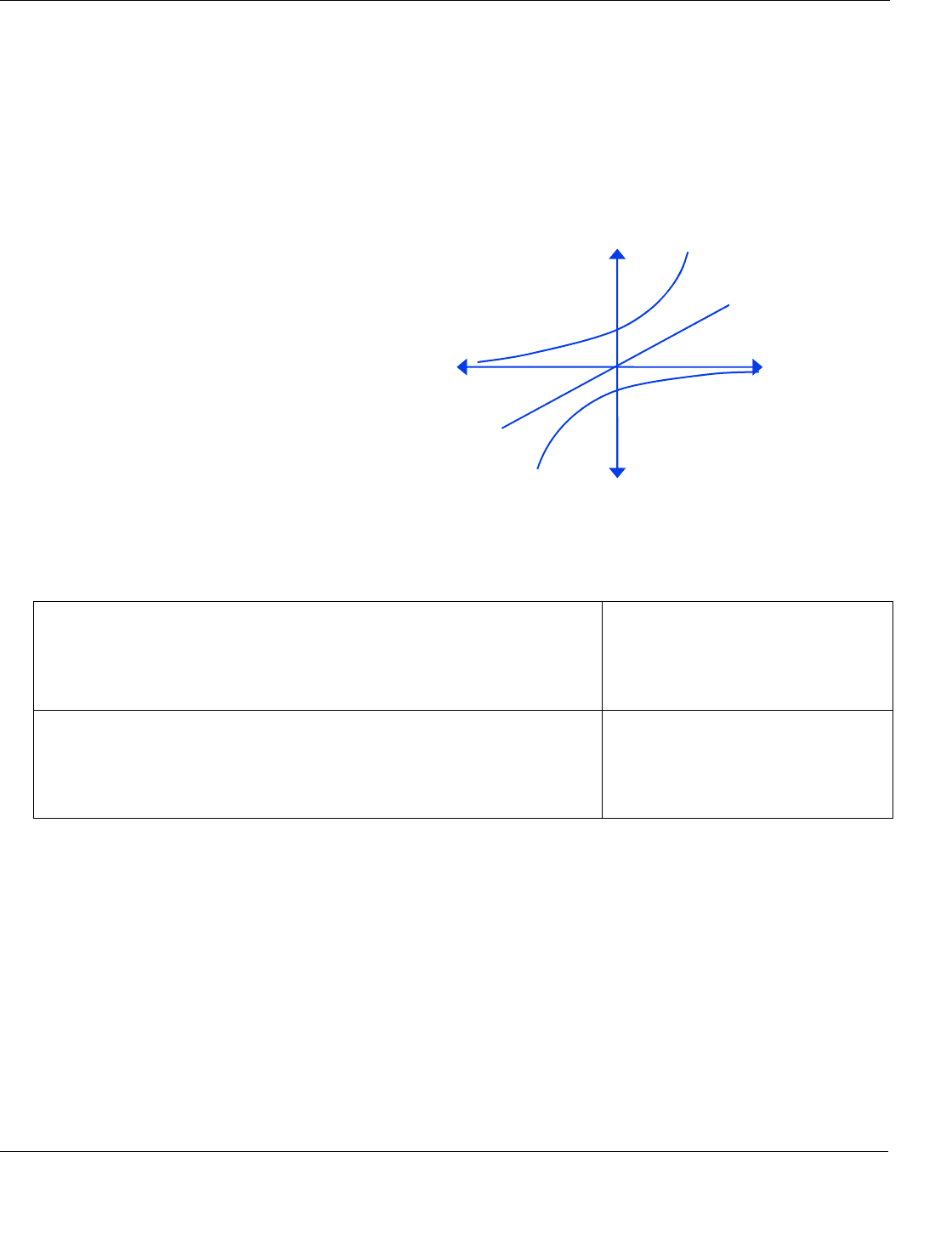Hill A.V. The Encyclopedia of Operations Management: A Field Manual and Glossary of Operations Management Terms and Concepts
Подождите немного. Документ загружается.


ptg6843605
ISO 9001:2008 – issue
The Encyclopedia of Operations Management Page 176
Unlike ISO 9001 and ISO 14000, ISO 26000 is a guidance standard rather than a certifiable management
system. It covers seven SR subjects: governance, human rights, labor practices, environment, operating
practices, consumer rights, and community rights (Bowers and West 2011).
See ISO 9001:2008.
ISO 9001:2008 – A family of standards for quality management systems published by the International
Organization for Standardization (ISO) that is designed to help organizations better meet the needs of their
customers and other stakeholders; also called ISO 9001:2008.
According to the ISO website
25
, “The ISO 9000 family of standards represents an international consensus on
good quality management practices. It consists of standards and guidelines relating to quality management
systems and related supporting standards. ISO 9001:2008 is the standard that provides a set of standardized
requirements for a quality management system, regardless of what the user organization does, its size, or whether
it is in the private or public sector. It is the only standard in the family against which organizations can be
certified – although certification is not a compulsory requirement of the standard. The other standards in the
family cover specific aspects, such as fundamentals and vocabulary, performance improvements, documentation,
training, and financial and economic aspects.”
The ISO standards can be used in three ways: (1) The standard requires the organization to audit its own
quality system to verify that it is managing its processes effectively, (2) the organization may invite its clients to
audit its quality system, and (3) the organization may engage the services of an independent quality system
certification body to obtain an ISO 9001:2008 certificate of conformity. Note that certification is done by
certification bodies and not ISO itself. An ISO certificate must be renewed at regular intervals, usually around
three years. More than one-million organizations worldwide are certified.
ISO standards are based on eight principles:
1. Customer focus – Organizations should understand current and future customer needs, should meet
customer requirements, and should strive to exceed customer expectations.
2. Leadership – Leaders establish unity of purpose and direction of the organization. They should create and
maintain an internal environment in which people can become fully involved in achieving the organization’s
objectives.
3. Involvement of people – People at all levels are the essence of the organization and their full involvement
enables their abilities to be used for the organization’s benefit.
4. Process approach – A desired result is achieved more efficiently when activities and related resources are
managed as a process.
5. System approach to management – Identifying, understanding, and managing interrelated processes as a
system contributes to the organization’s effectiveness and efficiency in achieving its objectives.
6. Continual improvement – Continual improvement of the organization’s overall performance should be a
permanent objective of the organization.
7. Factual approach to decision making – Effective decisions are based on the analysis of data and
information.
8. Mutually beneficial supplier relationships – An organization and its suppliers are interdependent and a
mutually beneficial relationship enhances the ability of both to create value.
Many firms using ISO can claim significant financial benefits (Naveh and Marcus 2005) and significant
operational benefits (Hendricks and Singhal 2001). Some of the benefits claimed for ISO include efficiency,
increased productivity, improved employee motivation, improved customer satisfaction, and increased profit.
Some critics suggest that ISO can be summarized as “document what you do and do what you document.” If
that is true, a firm could be carefully following a well-documented process that is consistently producing poor
quality products. Other criticisms focus on the bureaucratic overhead and the fact that many firms pursue
certification purely for marketing and sales reasons without regard to actual quality.
See ISO 26000, lean sigma, lean thinking, Malcolm Baldrige National Quality Award (MBNQA), quality
management, standardized work, TS 16949 quality standard.
25
www.iso.org/iso/iso_catalogue/management_and_leadership_standards/quality_management/iso_9000_essentials.htm,
February 24, 2011.

ptg6843605
issue
−
item master
Page 177 The Encyclopedia of Operations Management
issue – (1) In an inventory context: To physically move material from a stocking location and make the transaction
for this move. (2) In a problem-solving context: A topic that deserves further attention.
See allocated inventory, backflushing.
issue log – A project management tool that records problems identified during a project and then monitors them to
make sure that they are resolved.
Issue logs are usually created and maintained in an Excel file, using the following columns:
•
Issue ID (optional number or code)
•
Issue name (very short description)
•
Description (longer description)
•
Priority (A = top priority, D = low priority)
•
Author (optional)
•
Date created
•
Due date
•
Date resolved (blank until the issue is closed)
•
Owner (once it has been assigned)
•
Notes/actions (optional)
The issue log should be “owned” by one person, often the project manager (or admin), and should be brought
to each meeting. Project team meetings should prioritize outstanding issues and make sure someone owns each
of the high-priority issues. Project team meetings should also hold people accountable to complete the issues
they own. Resolved issues are usually also kept in the issue log, but sorted at the bottom of the list or moved to
another worksheet in the Excel workbook.
See Nominal Group Technique (NGT), project management.
issue tree – A mapping tool used to break a problem into its component issues.
In their book
The McKinsey Mind
, Rasiel and Friga (2001) defined an issue tree as “the series of questions
or issues that must be addressed to prove or disprove a hypothesis.” Issue trees are used by many consulting
firms to structure their approach to a client’s problem. Like detective work, the process starts with a set of
potential solutions (hypotheses) expressed as questions. For each of the main questions (hypotheses), the issue
tree starts with the question on the far left and moves to the right to identify additional questions that need to be
answered to address that question. The process continues with more detailed questions on the right. Each
question should guide the project team’s data collection, inquiry, and research. Ideally, the issues at any one
level in the tree are “mutually exclusive and collectively exhaustive” (MECE) so that all possibilities are
explored. (See the MECE entry.) If the answer is “no” to any question, further inquiry along that branch is
usually not needed.
The figure below is an example of a simple issue tree that “explodes” the problem into a set of sub-issues
(questions) that the consulting project needs to answer. A much larger example can be found at
http://interactive.cabinetoffi
ce.gov.uk/strategy/survivalg
uide/skills/s_issue.htm
(March 25, 2011).
Issue trees are closely
related to the Minto
Pyramid Principle (Minto
1996) used by many
consulting firms to structure
arguments in a consulting
presentation. Issue trees are similar to mindmaps and are a special case of a logic tree.
It is more important that issues be independent than MECE. For example, an outgoing shipment could be
late because of mechanical problems with a truck or because the products were not ready to ship. These two
events are not mutually exclusive (because they both could be true), but they can be studied independently.
Issue trees are usually drawn from left to right and are often created in Microsoft Excel or Visio. Phil Miller,
Professional Director of the Carlson Consulting Enterprise at the University of Minnesota, uses an Excel
workbook with these column headings from left to right: Governing question, sub-questions, sub-questions (for
the sub-questions), and analysis.
See causal map, decision tree, hypothesis, impact wheel, MECE, mindmap, Minto Pyramid Principle, Root
Cause Analysis (RCA), Y-tree.
item master – See bill of material (BOM).
Issue: Will the new
production process
b
e more
p
rofitable?
Sub-issue: Will it reduce
production costs?
Sub-issue: Can we
implement the changes?
Sub-issue: Can we
maintain product quality?
Does the process require
special facilities?
Does the process require
special skills?
Adapted from The McKinsey Mind
by Rasiel & Friga (2001).
Issue tree example

ptg6843605
item number
–
JIT II
The Encyclopedia of Operations Management Page 178
item number – See Stock Keeping Unit (SKU).
J
JCAHO – See Joint Commission.
jidoka – The Toyota Production System practice of designing processes and empowering workers to shut down a
process when an abnormal condition occurs; sometimes called autonomation.
The Japanese word “jidoka” is often translated as “autonomation,” which is a
contraction of the words “autonomous” and “automation.” Jidoka is sometimes translated as
“automation with a human touch (or human mind).” According to Ohno (1978), the original
jidoka device was a loom developed by Sakichi Toyoda (1867-1930), the founder of the
Toyota Motor Company. This loom stopped instantly if any one of the threads broke so
defective products were not built and so problems could be seen immediately. According to Ohno (1979),
Toyota sold the patent for his loom in 1930 to the Platt Brothers in England for $500,000, and then invested this
money in automobile research, which later led to the creation of the Toyota Motor Company.
Originally, jidoka focused on automatic methods for stopping a process when an error condition occurred;
however, it is now used to describe both automated and human means for stopping a process when a problem
occurs. For example, a process can use limit switches or devices that will automatically shut down the process
when the required number of pieces has been made, a part is defective, or the mechanism jams. This same
process can be operated with policies that allow the operators to shut down the machine when a warning light
goes on.
Quality benefits of jidoka
– Jidoka causes work to stop immediately when a problem occurs so defective
parts are never created. In other words, Jidoka conducts 100 percent inspection, highlights the causes of
problems, forces constant process improvement, and results in improved quality. Whereas automation focuses
on labor reduction, jidoka (autonomation) focuses on quality improvement. Note that jidoka is closely related to
Shigeo Shingo’s concept of poka yoke.
Cost benefits of jidoka
– Jidoka frees equipment from the necessity of constant human attention, makes it
possible to separate people from machines, allows workers to handle multiple operations, and prevents
equipment breakdowns. Ideally, jidoka stops the line or machine automatically, which reduces the burden of
workers to monitor the process. In fact, many sources define jidoka as stopping production automatically when a
problem occurs.
Jidoka is often implemented with a signal to communicate the status of a machine. For example, a
production process might use
andon lights
with a green light if everything is okay, a yellow light to signal an
abnormal condition, and a red light if the process is stopped.
See andon light, automation, autonomation, empowerment, error proofing, lean thinking, multiple-machine
handling, Toyota Production System (TPS).
jig – A mechanical device that holds a work piece securely in the correct position or has the capability of guiding the
tool during a manufacturing operation.
See fixture, manufacturing processes, tooling.
JIT – See Just-in-Time (JIT).
JIT II – A practice of having supplier representatives work at a customer location to better facilitate product design
or production coordination activities.
The JIT II concept was developed by Lance Dixon at Bose Corporation (Porter & Dixon 1994). JIT II is
essentially vendor managed inventory (VMI), early supplier involvement, and co-location of personnel. The
term does not appear to be widely used.
See co-location, Early Supplier Involvement (ESI), lean thinking, vendor managed inventory (VMI).

ptg6843605
job − job order costing
Page 179 The Encyclopedia of Operations Management
job – (1) In a general context: Any work that needs to be done by an individual or a machine. (2) In a
manufacturing context: Work that is done to create a batch of an item in response to a customer request; also
known as an order, manufacturing order, or production order.
See job order costing, job shop, lotsize.
job design – The process of defining and combining tasks to create work for an individual or a group of individuals;
also called work design and socio-technical design.
Job design usually results in a job description, which defines the set of tasks and responsibilities for an
individual worker. Job design should consider organizational requirements, individual worker attributes, health,
safety, and ergonomics. Taylor’s scientific method tended to view job design as a pure engineering problem;
however, the human relations movement broadened the scope to consider job satisfaction, motivation, and
interpersonal issues.
Organizations can better achieve their objectives by designing work that motivates workers to achieve their
full potential. A deep understanding of job design requires an understanding of behavioral science,
organizational behavior, organizational design, psychology, human resources management, economics,
operations, and engineering.
Socio-technical design considers the interaction between people and the technological processes in which
they work. Socio-technical design is important in almost every operations management topic. For example,
visual control, a key lean manufacturing concept, is a good socio-technical design because when processes are
made more visual, workers can understand them better and be more productive.
See addition principle, cellular manufacturing, cross-training, division of labor, empowerment, ergonomics,
gainsharing, Hawthorne Effect, High Performance Work Systems (HPWS), human resources, job enlargement,
job rotation, labor grade, lean thinking, multiplication principle, New Product Development (NPD), on-the-job
training (OJT), organizational design, pay for skill, productivity, RACI Matrix, Results-Only Work Environment
(ROWE), scientific management, self-directed work team, Service Profit Chain, single point of contact,
standardized work, subtraction principle, work measurement, work simplification, workforce agility.
job enlargement – Adding more tasks to a job; increasing the range of the job duties and responsibilities.
The management literature does not have consistent definitions of the terms “job enlargement” and “job
enrichment.” However, most experts define the terms as follows:
Job enlargement – This is also called horizontal job enlargement and adds similar tasks to the job
description. In other words, the worker is assigned more of a co-worker’s job. For example, the worker who
cleans sinks also is assigned to clean the toilets.
Job enrichment – This is sometimes called vertical job enlargement and adds more decision rights and
authority to the job. In other words, the worker is assigned some of the boss’ job. For example, the worker
might be given the added responsibilities of scheduling and inspecting the bathroom cleaning process for other
workers.
Job enlargement can have many benefits for an organization. Some of these include:
Reduced cycle time – When workers have broader skills, they can be moved to where they are needed. This
reduces queue time and cycle time.
Fewer queues – When a worker is assigned to do two steps instead of one, the queue between the steps is
eliminated, and much of the associated wait time is eliminated.
Improved process improvement capability –Workers with broader experience are better able to help the
organization improve processes, which means that the organization can accelerate “learning.”
Improved worker morale and retention – Enlarged jobs are often more interesting, which improves
worker morale and retention.
See addition principle, Business Process Re-engineering (BPR), cross-training, division of labor,
empowerment, handoff, human resources, job design, job rotation, learning organization, organizational design,
pay for skill, standardized work, work simplification.
job enrichment – See job enlargement.
job order costing – A cost accounting approach that accumulates costs for a job as it passes through the system;
also known as job costing.

ptg6843605
job rotation – job shop scheduling
The Encyclopedia of Operations Management Page 180
A job order costing system will accumulate the standard (or actual) direct labor, direct materials, and
overhead costs as a job passes through each step in a process. This type of system makes the most sense for a
process layout, such as a job shop.
See backflushing, facility layout, job, job shop, overhead, target cost.
job rotation – The movement of workers between different jobs in an organization.
This policy can be an effective method for cross-training and can improve communications, increase process
understanding, and reduce stress and boredom. Job rotation can also prevent muscle fatigue and reduce
workplace injuries.
Job rotation also makes sense for managers. The vice president of Emerson/Rosemount in Eden Prairie,
Minnesota, had been the vice president of Engineering, vice president of Manufacturing, and vice president of
Marketing before being named the president of the division. This executive was well prepared for a general
management role because of his job rotation experiences.
See cross-training, human resources, job design, job enlargement, learning organization, pay for skill,
workforce agility.
job shop – A manufacturing facility (or department in a facility) that groups similar machines in an area and makes
customized products for customers.
A job shop makes customized products with a make to order (MTO) customer interface in a process layout.
This customization is accomplished by moving customer orders through one or more departments (workcenters)
to complete all of the steps (operations) on the routing. Job shops typically have long customer leadtimes, long
queues, highly skilled workers, and general purpose machines. One of the main challenges for a job shop is
promising completion dates to customers and then scheduling orders to reliably deliver the jobs on or before the
promised date.
For example, a machining job shop might have drills, lathes, and grinding machines in separate workcenters.
Almost every order going through the job shop is unique in terms of the engineering specifications, routings, and
order sizes. The job shop has a long queue of orders waiting at each machine in order to maintain reasonably
high utilization of the equipment and skilled machine operators.
In contrast, a product layout organizes people and equipment in the sequence required to make the product.
For example, an assembly process is often organized in a straight line in the sequence required to build the
product. Assemblies are moved one at a time from one assembly step to the next. Some workers may require
tools and machines for their step in the process. All products go through exactly the same sequence, very little
product variety is allowed, no queues are allowed between steps, and parts are moved very short distances by
hand in lotsizes of one unit.
See batch process, discrete manufacturing, dispatching rules, facility layout, flowshop, job, job order
costing, job shop scheduling, makespan.
job shop scheduling – The process of creating a schedule (or sequence) for jobs (orders) that will be processed in a
job shop.
Job shops must make order date promises to customers when the jobs arrive. However, the uncertainty in
queue times, setup times, and run times makes it difficult to predict when an order will be completed. One of the
main performance metrics used in most job shops is the percentage of orders that are on time with respect to the
original promise date. Although many managers agree that it would be better to measure against the original
customer request date, few firms use this policy. Some firms follow the poor management practice of allowing
the promise date to be changed after the promise was made to the customer, and then measure their performance
against the revised promised date.
Academic research in job shop scheduling divides problems into two classes: static and dynamic. In the
static problem, the set of jobs is given and does not change. The static problem is usually defined as minimizing
the average flow time or the makespan (the ending time for the last job). Historically, the academic research in
job shop scheduling has focused on simulation experiments that compare dispatching rules and developing both
exact and heuristic finite scheduling algorithms that create schedules that do not violate the capacity constraints.
Exact methods often require inordinate amounts of computing time, but guarantee the optimal (mathematically
best) solution; heuristic methods are computationally fast, but do not guarantee the optimal solution. See the
dispatching rules entry for more detail.

ptg6843605
jobber − Just-in-Time (JIT)
Page 181 The Encyclopedia of Operations Management
Most Advanced Planning and Scheduling (APS) systems, such as I2, Manugistics, and SAP APO, have
scheduling capabilities for job shop scheduling. However, in this author’s experience, these systems are often
difficult to understand, implement, and maintain because of the data requirements, complexity of the problems,
and complexity of the systems.
See Advanced Planning and Scheduling (APS), algorithm, dispatching rules, expediting, flowshop, heijunka,
job shop, makespan, service level, shop floor control, slack time.
jobber – See wholesaler.
Joint Commission – An independent, not-for-profit organization that sets healthcare quality standards and
accredits healthcare organizations in the United States; formerly called the Joint Commission on Accreditation of
Healthcare Organizations (JCAHO), but now officially called The Joint Commission” and abbreviated TJC.
The Joint Commission is an independent, not-for-profit organization in the U.S. that is governed by a board
of physicians, nurses, and consumers. It evaluates and accredits more than 15,000 healthcare organizations and
programs in the U.S. Its mission is “To continuously improve the safety and quality of care provided to the
public through the provision of healthcare accreditation and related services that support performance
improvement in health care organizations.” Its “positioning statement” is “Helping Health Care Organizations
Help Patients.” The Joint Commission’s standards address an organization’s performance in key functional
areas. Each standard is presented as a series of “Elements of Performance,” which are expectations that establish
the broad framework that its surveyors use to evaluate a facility’s performance.
The Joint Commission’s homepage is www.jointcommission.org.
See adverse event, sentinel event.
joint replenishment – The practice of ordering a number of different products on a purchase or manufacturing
order to reduce the ordering (setup) cost.
In the purchasing context, inventory management cost can often be reduced by ordering many items from a
supplier on the same purchase order so the transaction and shipping costs are shared by many items. One simple
joint replenishment policy is to trigger a purchase order for all items purchased from a supplier when one item
reaches a reorder point. Order quantities can be determined using an order-up-to level policy subject to
minimum order quantities and package size multiples. In a manufacturing context, joint replenishment is
important when a process has major setups between families of products and minor setups between products
within a family. When one product needs to be made, the firm makes many (or all) products in the family.
See inventory management, lotsizing methods, major setup cost, order-up-to level, purchasing, setup cost.
joint venture – A legal entity formed between two or more parties to undertake an activity together; commonly
abbreviated as JV.
JVs normally share profits, risk, information, and expertise. JVs are common in oil exploration and
international market entry. Many JVs are disbanded once the activity is complete.
See Third Party Logistics (3PL) provider, vertical integration.
just do it – A very small process improvement task or project; also called quick hits.
Most process improvement projects are able to identify a number of small “just do it” improvement tasks.
These just do it tasks can be done by one person, require less than a day, do not normally require sign-offs by
quality control or higher-level managers, and do not require significant coordination with other people. The “just
do it” slogan is a trademark of Nike, Inc., and was popularized by Nike shoe commercials in the late 1980s.
Examples of just do it tasks include calling a supplier to request that they avoid deliveries over the noon
hour, improving safety by attaching a power wire to a wall, or adding a sign to a storage area.
Process improvement teams should quickly implement these small improvements and not waste time
prioritizing or discussing them. However, it is important that project teams document the benefits of these tasks
so leaders can learn about the improvement opportunities and implement similar ideas in other areas, and include
the benefits of the just do it tasks when evaluating the contributions of the project team.
See lean sigma, project management, quick hit.
Just-in-Time (JIT) – A philosophy developed by Toyota in Japan that emphasizes manufacturing and delivery of
small lotsizes only when needed by the customer.

ptg6843605
kaikaku – kaizen workshop
The Encyclopedia of Operations Management Page 182
JIT primarily emphasizes the production control aspects of lean manufacturing and the Toyota Production
System (TPS). For all practical purposes, the term “JIT manufacturing” has disappeared from common usage in
North America. The concept of “lean manufacturing” is now considered more current and larger in scope.
See kanban, lean thinking, Toyota Production System (TPS).
K
kaikaku – A Japanese word meaning radical change, breakthrough improvement, transformation, or revolution.
Kaikaku is a major, significant improvement that occurs after many small, incremental improvements (kaizen
events). Kaikaku should come naturally after completing many kaizens. The kaizens make kaikaku possible
because they simplify the process and make it more visible. Kaizen is essential for a long-term lean
transformation, but kaikaku is sometimes necessary to achieve breakthrough performance.
See Business Process Re-engineering (BPR), kaizen, kaizen workshop.
kaizen – A Japanese word meaning gradual and orderly continuous improvement or “change for the better.”
The English translation is usually continuous (or continual) improvement. According to the kaizen
philosophy, everyone in an organization should work together to make improvements. It is a culture of sustained
continuous improvement focusing on eliminating waste in all systems and processes of an organization. Kaizen
is often implemented through kaizen events (also called kaizen workshops), which are small process
improvement projects usually done in less than a week. The Lean Enterprise Institute dictionary (Marchwinski
& Shook 2006) teaches that kaizen has two levels:
1. System or flow kaizen focusing on the overall value stream. This is kaizen for management.
2. Process kaizen focusing on individual processes. This is kaizen for work teams and team leaders.
The Japanese characters for kaizen (改善) mean change for the good (source:
http://en.wikipedia.org/wiki/Kaizen, May 10, 2011).
See kaikaku, kaizen workshop, lean thinking.
kaizen event – See kaizen workshop.
kaizen workshop – The lean practice of using short (one to five day) projects to improve a process; also
known as a kaizen event, kaizen blitz, and rapid process improvement workshop (RPIW).
A kaizen workshop uses various lean tools and methods to make the problem visible, and then uses formal
root cause analysis and other means to identify and correct the problem at the source. The result is rapid process
improvement that can result in lower costs, higher quality, lower cycle time, and better products and services.
Although kaizen has historically been applied in manufacturing, many service businesses are also now applying
kaizen. One notable example is the Park Nicollet Health Systems, headquartered in St. Louis Park, Minnesota.
A kaizen workshop is not a business meeting or a typical process improvement project. It is a hands-on, on-
the-job, action learning, and improvement activity led by a skilled facilitator. The process involves identifying,
measuring, and improving a process. Unlike many approaches to process improvement, kaizen achieves rapid
process improvement in many small steps.
Kaizen teams include people who work the process and also heavily involve other people who work the
process. Therefore, workers usually feel consulted and involved, which goes a long way in overcoming
resistance to change. On this same theme, kaizen workshops often try many small “experiments,” again with the
workers involved, which drives rapid
learning and system improvement while
maintaining strong “buy-in” from the
people who work the process everyday.
Compared to DMAIC, a kaizen
workshop has a number of disadvantages
and advantages as listed in the table on the
right. One challenge of kaizen workshops
is managing the activities before and after
Kaizen workshop
Disadvantages Advantages
• Disruption of business
• Sometimes not enough
time for data-based
decision making
• Items on the “30-day list”
for more than 30 days
• Sometimes hasty
decisions are bad ones
• Quick business results
• Disruption limited to the event
• Rapid experiments in the gemba
• Involvement of the gemba
• Workers own the process and
the results
Source: Professor Arthur V. Hill

ptg6843605
kanban − Kano Analysis
Page 183 The Encyclopedia of Operations Management
the event. Some organizations prepare for a month before a workshop and then have a month of work after the
workshop. However, it is fairly common for items on the “30-day list” to be on the list for more than 30 days.
See 5 Whys, 5S, A3 Report, DMAIC, gemba, kaikaku, kaizen, lean thinking.
kanban – A lean signaling tool developed by Toyota that indicates the need for materials or production.
Kanban is the Japanese word for sign, signboard, card, instruction card, visible record, doorplate, or poster.
In manufacturing, a kanban is usually a card, cart, or container. A kanban square is a rectangle marked with
tape on a table or on the floor. A kanban card is often attached to a storage and transport container. Ideally,
kanban signals are physical in nature (containers, cards, etc.), but they can also take the form of a fax (a faxban),
an e-mail, or even a computer report.
A kanban signal comes from the customer (downstream) workcenter and gives a workcenter authority to start
work. If a workcenter does not have a kanban signal such as a card, container, or fax, it is blocked from doing
any more work. For example, when a kanban square is full, the workcenter is not allowed to produce any more.
A kanban system was formerly called a “just-in-time” system because production is done just before the
need of a downstream workcenter. However, the term “just-in-time” and the related JIT acronym have fallen out
of favor in North America.
A kanban system is a “pull system” because the kanban signal is used to “pull” materials from upstream
(supplier) workcenters. In contrast, an MRP system (or any schedule-based system) is a push system. Push
systems use a detailed production schedule for each part. Parts are “pushed” to the next production stage as
required by the schedule.
Push systems, such as MRP, require demand forecasts and estimated production leadtimes. To be “safe,”
most firms use planned leadtimes that are much longer than the average actual time. Unfortunately, long planned
leadtimes invariably result in poor forecasts, which result in excess inventory and long actual leadtimes. Long
actual leadtimes drive management to further increase leadtimes and compound the problem. Pull systems tend
to work better than push systems for repetitive manufacturing as long as the demand is relatively level and cycle
times are small.
Toyota uses a dual-card kanban system with two main types of kanban cards – the production kanban and
the withdrawal kanban. The production kanban signals (indicates) the need to produce more parts. No parts may
be produced without a production kanban. If no production kanban cards are at the workcenter, the workcenter
must remain idle and workers perform other duties. Containers for each specific part are standardized, and they
are always filled with the same (ideally, small) quantity. The withdrawal kanban signals (indicates) the need to
withdraw parts from one workcenter and deliver them to the next workcenter.
The number of kanban cards between two workcenters determines the maximum amount of work-in-process
inventory between them. Production must stop if all kanban cards are attached to full containers. When a
kanban card is removed, the maximum level of work-in-process inventory is reduced. Removing kanban cards
can continue until a shortage of materials occurs. A shortage indicates a problem that was previously hidden by
excessive inventory. Once the problem is found, corrective action is taken so the system can function at a lower
level of work-in-process inventory.
According to http://en.wikipedia.org/wiki/Kanban, the kanji characters for kanban are 看板.
See blocking, CONWIP, faxban, heijunka, Just-in-Time (JIT), lean thinking, POLCA (Paired-cell
Overlapping Loops of Cards with Authorization), pull system, standard products, starving, upstream.
Kano Analysis – A quality measurement tool used to categorize and prioritize customer requirements based on
their impact on customer satisfaction; also called the Kano Model, Kano Diagram, and Kano Questionnaire.
Kano Analysis was developed by the Japanese quality expert Dr. Noriaki Kano of Tokyo Rika University to
classify customer perceptions of product characteristics. Kano defines five categories of product attributes:
• Must-have attributes (also called must-be or basic/threshold attributes) – The basic functions and
features that customers expect of a product or service. For example, an airline that cannot meet airport noise
regulations will not succeed in the marketplace.
• Performance attributes (one-dimensional quality attributes) – These attributes result in satisfaction when
fulfilled and dissatisfaction when not filled. The better the performance, the greater the customer
satisfaction. For example, an airline that provides more entertainment options will be perceived as having
better service.

ptg6843605
keiretsu – keiretsu
The Encyclopedia of Operations Management Page 184
• Delighter attributes (also called attractive quality attributes) – These are the unexpected “extras” that can
make a product stand out from the others. For example, an airline that offers free snacks in the waiting area
would be a welcome surprise. Delighters vary widely between customers and tend to change over time. This
point is consistent with the popular service quality expression, “Today’s delight is tomorrow’s expectation.”
• Indifferent attributes (reverse quality attributes) – These attributes do not affect customer satisfaction.
For example, when customers pick up rental cars at an airport, they will likely have different attitudes about
seats, checkout speed, and global positioning systems. Customers will always expect seats in the car and will be
completely dissatisfied with a car without seats. Seats, therefore, are a must-have feature. Customers expect the
check-in process to take about 15 minutes, but are happier if it takes only 10 minutes. Satisfaction, therefore,
increases with check-in speed. Lastly, many customers are delighted if their rental cars have a Global
Positioning System (GPS). A GPS, therefore,
is a “delighter” feature.
Kano Analysis uses a graphical approach
as shown in the Kano Diagram on the right.
The x-axis (“dysfunctional/functional”) of the
diagram measures the level of a particular
product attribute (i.e., checkout speed) and the
y-axis (“delight/dissatisfaction”) measures
customer satisfaction. For example, checkout
speed is a performance attribute and is drawn
as a 45-degree straight line. Must-have
features (e.g., seats) are drawn so that high
functionality brings satisfaction up to zero. When a “delighter” feature (e.g., a GPS) is not present, satisfaction is
still at or above zero, but increasing a “delighter” can increase satisfaction significantly.
Kano Analysis begins by identifying all possible customer requirements and uses a survey to measure
customer perceptions about each requirement. The following is a simple example of a Kano Questionnaire:
Kano questionnaire example
If the radio antenna automatically retracts when the radio is turned off,
how do you feel?
(Note: This is the functional form of the question.)
1. I like it that way.
2. It must be that way.
3. I am neutral.
4. I can live with it that way.
5. I dislike it that way.
If the radio antenna automatically does not retract when the radio is
turned off, how do you feel?
(Note: This is the dysfunctional form of the question.)
1. I like it that way.
2. It must be that way.
3. I am neutral.
4. I can live with it that way.
5. I dislike it that way.
Each question has two parts (1) “How do you feel if that feature is present in the product?” and (2) “How do
you feel if that feature is not present in the product?” The responses for the two questions are then translated into
curves on the graph.
A Kano Analysis can be used to classify and prioritize customer needs. This is useful because customer
needs are not all the same, do not all have the same importance, and are different for different subpopulations.
The results of a Kano Analysis can be used to identify customer segments, prioritize customer segments, design
products for each segment, and guide process improvement efforts.
Walden et al. (1993) have written a good review article on Kano Analysis.
See Analytic Hierarchy Process (AHP), ideation, New Product Development (NPD), Pugh Matrix, service
quality, voice of the customer (VOC).
keiretsu – A Japanese term for a set of companies with interlocking business relationships and shareholdings.
The big six keiretsu are Mitsui, Mitsubishi, Sumitomo, Fuyo (formed primarily from the old Yasuda
zaibatsu), Sanwa, and Dai-Ichi Kangyo. The keiretsu were established after World War II, following the
dissolution of the family-owned conglomerates known as zaibatsu by the American Occupation authorities. It
Functional
Dysfunctional
Customer
dissatisfaction
Customer
Delight
P
erformance
(One-dimensional)
Must have
D
elighte
r
(Attractive)
Kano Diagram

ptg6843605
Kepner-Tregoe Model − Kepner-Tregoe Model
Page 185 The Encyclopedia of Operations Management
was the belief of many Americans that they could hasten the spread of democracy in Japan by reducing the
concentration of wealth and hence economic power. Shares of companies owned by the zaibatsu were
distributed to employees and local residents. As a result that when the stock market reopened in 1949, 70 percent
of all listed shares were held by individuals.
Unfortunately, the zaibatsu dissolution was done in a haphazard manner. Often a single factory that merely
assembled products for its group became an independent company, lacking a finance department, marketing
department, or even a procurement department. To deal with this precarious situation, companies within the
former zaibatsu banded together through a system of cross-shareholding, whereby each company owned shares
in all other group members’ companies. Within this structure, the major shareholders tended to be banks, a
general trading company, and a life insurance company. Today, the “Big Six” keiretsu are all led by their
respective banks, which are the largest in Japan.
Because listed companies bought and held onto shares in other listed companies, the ratio of shares owned by
individuals in Japan steadily declined to around 20 percent by 2003. There has also never been a hostile takeover
of a listed Japanese company, simply because its shareholders have refused to sell at any price. This has made
management rather complacent and has greatly reduced shareholders’ rights. Annual shareholders’ meetings in
Japan tend to be held on the exact same day, and usually end quickly without any questions.
In the 1990s, when the Japanese stock market was in decline, stable shareholding began to decline. Banks
needed to sell their shareholdings to realize gains to cover their credit costs. Life insurers had to sell to realize
higher returns to pay their policyholders.
The keiretsu concept is rarely used by Western companies. One exception is the venture capital firm of
Kleiner, Perkins, Caufield & Byers, which encourages transactions among companies in which it holds a stake.
See
Just-in-Time, lean thinking, Toyota Production System (TPS).
Kepner-Tregoe Model – A systematic scoring approach used to evaluate alternatives in a decision-making
process and win organizational approval for the decisions that come out of the process.
The Kepner-Tregoe (KT) Model was developed by Charles H. Kepner and Benjamin B. Tregoe in the 1960s.
KT is particularly effective when the organization has to evaluate a number of qualitative issues that have
significant trade-offs between them. The KT Model has been “discovered” by many people and is very similar to
Criteria Based Matrix, Pugh Matrix, Multi-Attribute Utility Theory (MAUT), and other methodologies.
The steps in the Kepner-Tregoe methodology are:
1. Clearly define the problem at a high level.
2. Establish strategic requirements (musts), operational objectives (wants), and constraints (limits).
3. Rank objectives and assign relative weights.
4. Generate alternatives.
5. Assign a relative score for each alternative on an objective-by-objective basis.
6. Calculate the weighted score for each alternative and identify the top two or three alternatives.
7. List adverse consequences for each top alternative and evaluate the probability (high, medium, low) and
severity (high, medium, low).
8. Make a final, single choice between the top alternatives.
The Kepner-Tregoe entry in Wikipedia provides a paired-comparison approach for developing the weights
for the KT Model. Each of the criteria is listed on both the columns and the rows. Experts are then asked to
independently compare all pairs of criteria in the matrix and to put a “1” when the row criterion is more
important than the column criterion. Ties are not allowed. The main diagonal of the matrix is filled with all
“1”s. The rows are then summed and divided by the sum of the values in the matrix, which will always be
( 1) / 2s n n n , where n is the number of criteria that are evaluated.
For example, a location decision has three criteria: cost, distance to markets, and availability of suppliers.
The matrix is fort his example is shown below.
